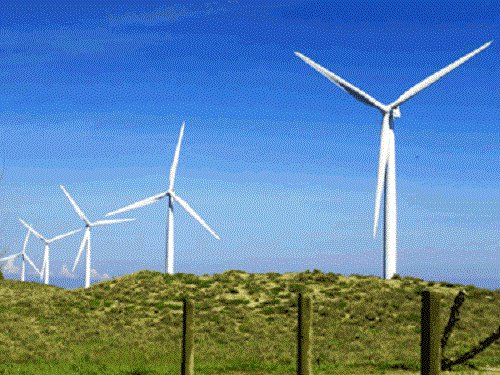
The British government’s decision to cut the PV solar subsidies by 87% caused a strong rebound in the country’s market. As one of the important means for the rapid implementation of renewable energy, subsidies, the government has always been in a dilemma: no subsidies, slow promotion of cleanliness; subsidies, the rapid increase in the installed capacity and overwhelmed the financial burden.
According to the latest statistics from China Electric Power, in 2014, the nationwide grid-connected solar power generation was 23.1 billion kWh, an increase of 170.8% year-on-year; the grid-connected wind power generation was 156.3 billion kWh, a year-on-year increase of 12.2%, which means renewable energy subsidy funds. Also need to increase this proportion. However, even if the whole society uses electricity to collect additional subsidies for renewable energy, it will only increase by 3.8% in 2014.
According to the data released by the National Energy Administration and the Ministry of Industry and Information Technology, as of now, wind power and photovoltaics have already completed the “Twelfth Five-Year Plan†ahead of schedule. The China Photovoltaic Industry Association, the China Recycling Economic Association's Renewable Energy Professional Committee, and the China Renewable Energy Society are jointly named "Books." It is proposed that the "13th Five-Year Plan" PV installation target be adjusted from the previous 100 million kilowatts to 200 million kilowatts. How will the subsidy policy deal with the rapidly growing amount of renewable energy?
Subsidies or trillions of dollars
If counted from the implementation of the "Renewable Energy Law" in 2005, the development of renewable energy such as wind power and photovoltaics has just passed the 10-year horizon.
According to the data released by the National Energy Administration, in the first half of 2015, the new grid-connected capacity of wind power in China was 9.16 million kilowatts. By the end of June, the total grid-connected capacity of wind power in China was 105.53 million kilowatts, and the cumulative grid-connected capacity increased by 27.6%. Complete the "Twelfth Five-Year" plan for wind power ahead of schedule.
For photovoltaics, as of the end of June, China's installed photovoltaic power generation capacity reached 37.78 million kilowatts, of which photovoltaic power stations were 30.07 million kilowatts and distributed photovoltaics 5.11 million kilowatts. This means that following the wind power, PV has also completed the installation target set forth in the “Twelfth Five-Year Plan†in advance.
Tao Guangyuan, executive director of the Sino-German Renewable Energy Cooperation Center, calculated the PV subsidies in China specifically. If the newly added photovoltaic power generation capacity is calculated to be 16 million kilowatts in 2015, the average generation capacity per unit photovoltaic power will be 1200 kWh/kW. In terms of annual budget, the average subsidy is calculated based on 0.4 yuan/kWh, and the subsidy term is calculated based on 20 years. The calculated subsidy cost is 153.6 billion yuan. At this level, the accumulated subsidies will reach about 1.5 trillion yuan in the next 10 years.
However, Li Junfeng, director of the National Center for Climate Strategy Research and International Cooperation, believes that 1 trillion yuan can subsidize 2 trillion kwh of photovoltaic power generation, and photovoltaic power generation only needs to subsidize 20 billion yuan each year. Photovoltaic power generation is now only more than 400 billion kilowatt-hours, and the new power generation capacity is increasing each year. If we want to reach 2 trillion kwh of photovoltaic power generation, it may not be until 2050. At that time, photovoltaic power generation may not be subsidized.
On December 16, 2014, the most important achievement of the renewable energy development project of China-Denmark was "China's Renewable Energy Development Roadmap 2050," released by the Energy Research Institute of the National Development and Reform Commission and the National Renewable Energy Center. Wang Zhongying, deputy director of the National Energy Research Institute of the National Development and Reform Commission and director of the National Renewable Energy Center, once said: “China’s renewable energy development vision is that by 2050, China’s terminal energy consumption is 3.2 billion tons of standard coal, and electricity accounts for the entire terminal energy. More than 60% of consumption, direct consumption of fossil energy is 900 million tons of standard coal. The proportion of non-fossil energy generated in power supply is 91%, and renewable energy is 86%.
According to Meng Xianyu, deputy director of the China Renewable Energy Society, photovoltaics account for 27% to 28% of this roadmap. By 2050, the goal of photovoltaic power generation is to reach 2,700 GW.
"The market is big enough, so we must look at the issue of renewable energy development strategically. We must not only focus on the immediate interests, but we must not seek quick success and instant benefits," Meng said.
Although people in the industry believe that it is difficult to achieve 80% of renewable energy power generation in 2050, the government has also been gradually improving its phased goals.
Zhang Shuwei, the chief energy economist of the Zhuoerde (Beijing) Environmental Research Center, pointed out to the “China Business†reporter that based on the current non-fossil energy development expectations, the non-fossil energy share will continue to grow by 5% from 15% in 2020, which means that Its development speed is many times faster than other energy sources.
Zhang Shuwei believes that the 20% non-fossil energy share target is a sufficient condition for carbon emission to reach its peak in 2030. Renewable energy, especially the “13th Five-Year†development target of wind power 200 million installed capacity and photovoltaic 150 million installed capacity, will achieve this. An important part of the two international commitments.
This also means that with the increasing scale of renewable energy, the burden of subsidies is getting heavier.
Portable Electric Burner,Electric Cookers,Counter Top Cooking Tools,Electric Iron Burner
Shaoxing Haoda Electrical Appliance Co.,Ltd , https://www.zjhaoda.com